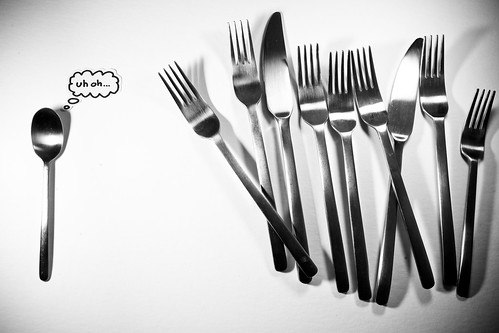
In everyday language we often express this as a percent and as most people has difficulty working with decimals. No other reason. 9 out of nine is 1 not 100%. While we're on the topic the conversion to percent should be written (9/9)% or (9/9)x100, not both. Per Cent means per 100, therefore (9/9)x100% is 1 times 100 per 100 which is 1. Try it on your calculator, 1 times 100 then %.
The way that we use percentages and probabilities also differ slightly in everyday language. We talk about percentages as the proportion of successes in the total, but a probability often refers proportion of times a single event will be a success.The meaning is just ever so slightly different, the result is the same often, but the path to get there is different.

In school we say that a test that got 13 out of 100 question right got 13%. And could have been written by a monkey guessing randomly. But that's wrong.... The bit about the monkey. No the monkey couldn't have guessed randomly, and certainly neither could a student, but that's another story. The 13% is right though. They got 13% of the questions right. But that doesn't really tell us anything, it just clumps all the data into one point. In probability we would say that, the probability of any particular question being right, is 13%. Let's think about that. I pick one question from the test there is a 13% change that it is right.

This shift in thinking is one of the first challenges made by all students takeling their first statistics course. Fundamentally we want to know the behaviour of a given individual. But we can only determine this by figuring out the behaviour of the entire population and hoping that the individual will land near an "average" individual from the population. Once you get past this many of the "calculations" of higher order probabilities are quite simple.

If I roll 2 dice, what is the probability that one is a 4 given that they add to 9. "Not a clue, no idea where to start." Well think about one instance, and start with what we know. We know they add to 9, therefore the dice must be one of– 4,5; 5,4; 6,3; 3,6. That's 4 different pairs. Which ones of them have a 4; two of them. Therefore the probability that one is a 4 given that they add to 9 is 2/4, or one half.

How does this relate? What we did differently here was to look at the individual in order to extrapolate. So just like the test, instead of looking at one question and trying to guess the probability if will be right, we looked at every one, determined the probability of a correct answer on average, then the probability of a success for that individual should be the same.

And this applies to all of statistics. Every statistics problem is simply determining the number of successes and failures in every possible outcome in order to determine the probability of a single success on a single individual, and sometimes we've come up with nice formulae to make quick calculation shortcuts. It's all the same. Determine every single possibility, figure out how many of them are successes, successes out of total equal probability.
And that's probability.

No comments:
Post a Comment